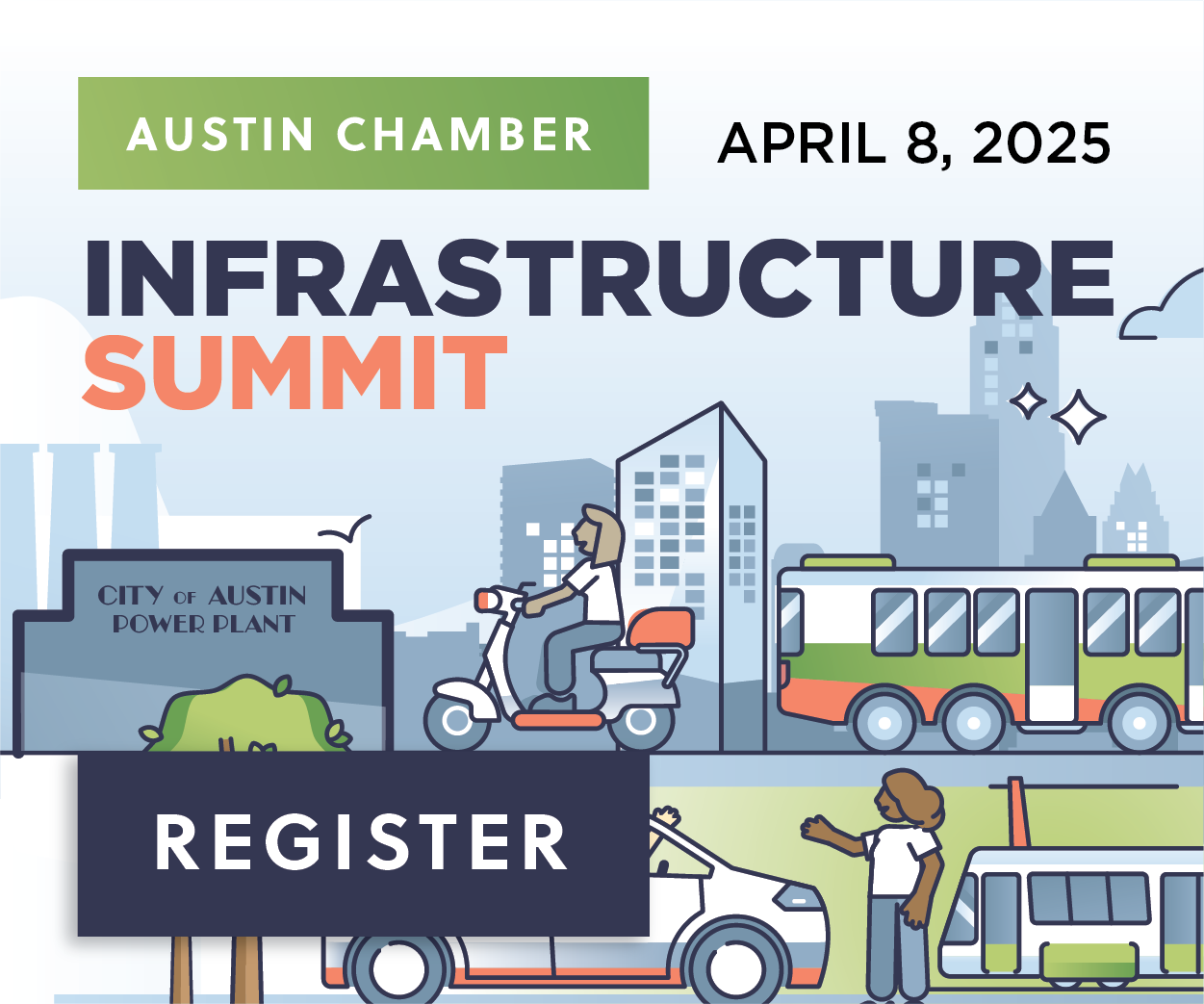Summit panel looks at possibilities and challenges of I-35 cap-and-stitch program
Thursday, April 4, 2024 by
Chad Swiatecki While intense construction on the lowering and widening of Interstate 35 isn’t scheduled to begin until mid- or late 2026, local business and political leaders want the public to know that decisions and talks taking place now will have a dramatic effect on how the project reshapes Austin’s future.
Transportation and commerce experts discussed the I-35 project and the city’s accompanying cap-and-stitch program during a panel at the Austin Chamber’s recent infrastructure summit, which looked at issues such as transportation, energy and major capital projects, and how the Austin area should prepare for the next decade.
Related to I-35, talk turned to the upcoming open houses planned to let the community set an early vision for what the four caps the city will place over I-35 should look like and what public amenities they should include. The caps are large plazas that would be built over portions of the sunken freeway. The first open house organized by Our Future 35 is scheduled for May 18 at the Austin Community College Highland Campus. There was also discussion on the progress the city and the Texas Department of Transportation are making on their Construction Partnership Program that will seek to keep residents and businesses updated on the ever-changing state of roadwork through the core of downtown.
Emily Risinger, planning and urban design director for the Downtown Austin Alliance, said proper coordination will be crucial to aid downtown residents and business people – which total 130,000 employees, about 15,000 residents, well over 10,000 hotelgoers, plus 150 acres of parkland and 190 historic sites that attract visitors.
“They’re going to always have lanes and parts of the highway open during construction, so there’s never going to be a time where it’s fully closed,” she said. “They also try to prioritize heavy construction during the evening off-peak hours. … So there will never be a full closure happening over the roughly 10-year construction horizon through 2032. That’s all good news for our stakeholders.”
After years of conceptual planning, the city has taken substantial moves beginning late last year with following through on the caps and stitches, which will create large expanses of public space and improved east-west connectivity over portions of the roadway. The cost for the construction of the four caps and one stitch is projected at over $500 million, with the city recently receiving a $105 million federal grant to pay for much of a cap that will run from Cesar Chavez Street to Fourth Street.
Council also recently opted to seek an infrastructure loan from the state for $191 million, with additional federal money up for grabs as part of ambitious infrastructure programs.
The caps will structurally be able to support small structures of one or two stories plus open-space amenities. Risinger said the open houses, with a second event planned for September, will let the public discuss what’s possible and how the city’s caps can complement a similar set of caps the University of Texas plans to install over the portions of I-35 adjacent to the campus.
“Our city doesn’t get an opportunity like this one very often. I-35 hasn’t been reconstructed since the 1970s and while the construction and the collection of the caps and stitches might be a few years away, right now is really the chance for everyone to help set the vision for the spaces that will go over the lowered highway,” she said. “The cap-and-stitch program is really geared around re-stitching the city together, physically, culturally and economically.”
One of the next major hurdles will be assembling the funding for the amenities on top of the caps, which will likely rely mostly on philanthropic funds and public-private partnerships.
“My sense of it is that people are excited about the opportunity of public-private partnership, though we haven’t really started to even scratch the surface on private philanthropy for this project yet,” Risinger said, noting that Dallas’ Klyde Warren Park is the closest comparison project even though Austin’s caps and stitch will involve much more available space. “From an urban design perspective, we want all of the caps to be complementary of each other, so you don’t want the exact same stuff on the UT caps as we’re going to have right at 11th and 12th Street or at Cesar Chavez with what we’ll do with our big downtown cap.”
The Austin Monitor’s work is made possible by donations from the community. Though our reporting covers donors from time to time, we are careful to keep business and editorial efforts separate while maintaining transparency. A complete list of donors is available here, and our code of ethics is explained here.
You're a community leader
And we’re honored you look to us for serious, in-depth news. You know a strong community needs local and dedicated watchdog reporting. We’re here for you and that won’t change. Now will you take the powerful next step and support our nonprofit news organization?








